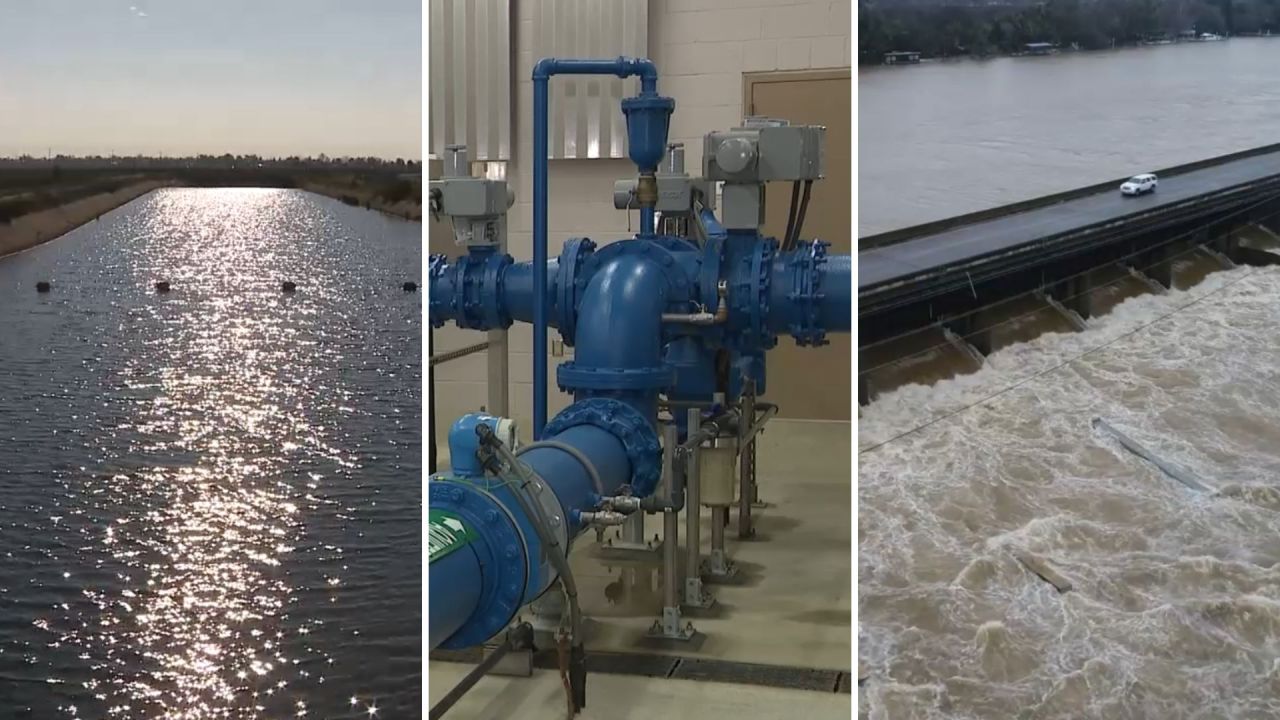
As of mid-February, the Sacramento area has now received more than a foot of rain in the current water season.
The rain and snowfall from this winter’s storms have been swelling rivers, adding to the Sierra Nevada snowpack and hopefully replenishing reservoirs.
Water experts say if we don’t change the way we store and use the water we will be in trouble in the future, likely facing higher water bills and laws that seriously restrict water use.
There could be another way, however, if we look beneath our feet.
When massive storms bring lots of water to California, bodies of water like Folsom Lake have to release water to make room for more water.
All that water that is released heads out to sea unused. A lot of storm runoff also goes unused.
But what if there was a way to capture a good chunk of that unused water and store it for a drought that we know is possible?
That is exactly what state officials are trying to do by putting excess water underground.
For decades hydrogeologist Tim Godwin has been studying groundwater.
“This is fundamentally changing the way we look at how we manage water in the state,” Godwin said.
He says the state’s Dept. of Water Resources is now looking at the whole water picture.
“Notice I am not distinguishing groundwater from surface water… it is one resource, and they are connected, and now we are starting to manage the basins, the bottom of our system,” he said.
So how much water can be stored underground?
Imagine a standard bucket. That bucket can represent all the water in California’s lakes and rivers in one year, about 40 to 50 million acre-feet of water.
Four standard garbage bins —the ones that you set out on the curb every week— represent the capacity of how much water can be stored underground.
Even though the aquifers are not empty, they can still take two to four times the amount of water California gets in a normal year.
Scientists have found two main ways to get all of that water underground.
Roseville has been implementing one of the ways for almost two decades through the use of a reversible water pump.
“Roseville was key in sort of pioneering the process really from the start,” Sean Bigley with Environmental Utilities of Roseville said.
The massive pumps can withdraw groundwater, but when we aren’t in a drought, these pumps can put large amounts of treated water back into the ground.
“This past year we were able to recharge about 2000-acre feet of water. That is 6-thousand households worth of water (in an entire year),” Bigley said.
It’s hard to visualize where all the water goes underground.
They send water hundreds of feet down, saturating layers of rock, dirt, sand and silt, replenishing the aquifers that have been slowly shrinking over decades of use.
The other way to get a lot of water underground fast is with groundwater basins. These big areas of land can be flooded with storm runoff, water we couldn’t otherwise capture.
Dr. Graham Fogg, professor emeritus of hydrogeology at UC Davis, said, “If you look across this landscape, I mean it looks all the same, so people think, ‘Oh, the aquifer is uniform.’ Well, it’s not uniform.”
“It’s kind of like a complex architecture underground. Where water moves quickly and where we can recharge relatively rapidly is sand and gravel,” Dr. Fogg added.
To find where the best, most porous soil is, the DWR uses a high-tech electromagnetic device carried high above the ground by a helicopter traveling up and down the state.
Think of it like a giant X-ray or MRI that looks deep into the ground, around 1,000 feet, to map where the most porous areas are located.
Whether it is with big basins or reversible pumps, these tools will become more important as our climate is changing and storms have the potential to get stronger.
“Our surface water storage can fill quickly as we saw last year, (but) then what?” Godwin said. “This is the ‘then what?’”
This way of thinking about groundwater storage is so different from what was applied in previous decades. It takes years to get the different water agencies and thousands of landowners on board.
However, cities like Roseville, as well as the state’s water administrators and countless owners, are catching on and making those changes to save California’s water future.
Suggest a Correction
